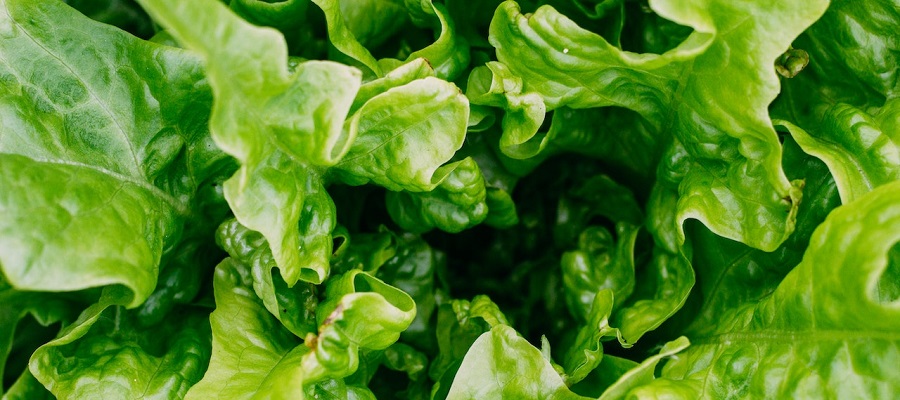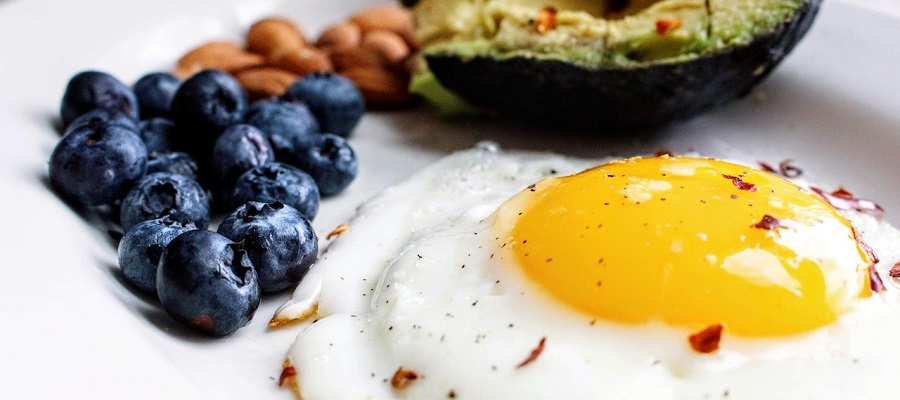Lettuce is a leafy green vegetable that is commonly used in salads and sandwiches. It is a versatile and nutritious vegetable that is low in calories and high in vitamins and minerals. In this comprehensive guide, we will explore the different types of lettuce, their nutritional benefits, how to select and store lettuce, and some delicious recipes to try.
Types of Lettuce
There are several types of lettuce, each with its own unique flavor and texture:
- Butterhead lettuce: This type of lettuce has soft, buttery leaves and a mild flavor. It is often used in salads and sandwiches.
- Iceberg lettuce: This lettuce has a crisp texture and a mild flavor. It is commonly used in salads and as a topping for burgers and sandwiches.
- Romaine lettuce: This lettuce has a crunchy texture and a slightly bitter flavor. It is often used in Caesar salads and as a wrap for sandwiches.
- Arugula: This lettuce has a peppery flavor and is often used in salads and as a topping for pizzas and sandwiches.
- Spinach: This leafy green has a mild flavor and is packed with nutrients. It is often used in salads and as a base for smoothies.
Nutritional Benefits of Lettuce
Lettuce is a low-calorie vegetable that is packed with nutrients. It is a good source of vitamins A and C, folate, and fiber. It also contains antioxidants that can help protect against cancer and other diseases.
Selecting and Storing Lettuce
When selecting lettuce, look for leaves that are crisp and free of blemishes. Avoid lettuce that is wilted or has brown spots. Store lettuce in the refrigerator in a plastic bag or container. It is best to use lettuce within a few days of purchase.
Delicious Lettuce Recipes
Here are some delicious recipes that feature lettuce:
- Grilled Chicken and Romaine Salad
- Arugula and Goat Cheese Pizza
- Spinach and Feta Stuffed Chicken Breasts
- Butterhead Lettuce and Avocado Salad
- Iceberg Lettuce Wedge Salad with Blue Cheese Dressing
With its versatility and nutritional benefits, lettuce is a great addition to any diet. Try incorporating different types of lettuce into your meals for a delicious and healthy boost.
Types of Lettuce
Butterhead Lettuce
Butterhead lettuce, also known as Bibb or Boston lettuce, has small, round, and loosely formed heads. The leaves are soft and buttery, with a slightly sweet flavor. This type of lettuce is perfect for salads and sandwiches.
Iceberg Lettuce
Iceberg lettuce is the most common type of lettuce found in grocery stores. It has a tight, compact head with crisp, pale green leaves. While it doesn't have as much nutritional value as other types of lettuce, it's great for adding crunch to salads and sandwiches.
Romaine Lettuce
Romaine lettuce has long, narrow leaves with a slightly bitter taste. It's often used in Caesar salads and is a great source of vitamins A and K. Romaine lettuce is also sturdy enough to be used as a wrap for sandwiches and burgers.
Loose-Leaf Lettuce
Loose-leaf lettuce comes in a variety of colors and shapes, including red, green, and oak leaf. It has a delicate texture and a mild, slightly sweet flavor. This type of lettuce is great for salads and can also be used as a bed for grilled meats and vegetables.
Nutritional Value of Lettuce
Calories and Macronutrients
Lettuce is a low-calorie vegetable that is often used as a base for salads. One cup of shredded lettuce contains only 5 calories, making it an excellent choice for those who are watching their weight. In addition to being low in calories, lettuce is also low in carbohydrates, with only 1 gram per cup. It is also a good source of fiber, with 1 gram per cup.
Vitamins and Minerals
Lettuce is a good source of several important vitamins and minerals. One cup of shredded lettuce contains 10% of the recommended daily intake of vitamin A, which is important for maintaining healthy vision and skin. It also contains 4% of the recommended daily intake of vitamin C, which is important for immune system function. Additionally, lettuce is a good source of folate, which is important for fetal development during pregnancy. One cup of shredded lettuce contains 15% of the recommended daily intake of folate. Lettuce also contains small amounts of other important minerals, such as calcium, iron, and potassium.
Health Benefits of Lettuce
Weight Management
Lettuce is a low-calorie food that is perfect for weight management. It is high in fiber, which helps to keep you feeling full for longer periods of time. Additionally, lettuce is low in fat and carbohydrates, making it an ideal food for those who are trying to lose weight.
Heart Health
Lettuce is rich in vitamins and minerals that are essential for heart health. It contains potassium, which helps to regulate blood pressure and reduce the risk of heart disease. Additionally, lettuce is high in folate, which can help to reduce the risk of stroke and heart attack.
Eye Health
Lettuce is a great source of vitamin A, which is essential for eye health. Vitamin A helps to protect the eyes from damage caused by free radicals and can help to prevent age-related macular degeneration.
Immune System Support
Lettuce is high in vitamin C, which is essential for a healthy immune system. Vitamin C helps to boost the production of white blood cells, which are responsible for fighting off infections and diseases.
How to Select and Store Lettuce
Choosing Fresh Lettuce
When selecting lettuce, look for leaves that are crisp and brightly colored. Avoid lettuce with wilted or brown leaves, as this indicates that it is past its prime. Additionally, check the stem of the lettuce to ensure that it is not slimy or discolored.
Storing Lettuce
To keep lettuce fresh, it is important to store it properly. First, remove any damaged or wilted leaves from the lettuce. Then, rinse the lettuce under cold water and pat it dry with a paper towel. Next, wrap the lettuce in a damp paper towel and place it in a plastic bag. Store the bag in the crisper drawer of your refrigerator.By following these tips, you can ensure that your lettuce stays fresh and delicious for as long as possible.
How to Prepare Lettuce
Washing Lettuce
Before preparing lettuce, it is important to wash it thoroughly to remove any dirt or bacteria. Start by filling a large bowl with cold water. Remove the leaves from the lettuce head and place them in the bowl of water. Swish the leaves around in the water to loosen any dirt or debris. Drain the water and repeat the process until the water is clear and free of any dirt.
Cutting and Chopping Lettuce
Once the lettuce is washed, it can be cut or chopped for use in salads or other dishes. To cut lettuce into bite-sized pieces, stack several leaves on top of each other and roll them tightly. Use a sharp knife to slice the lettuce into thin strips. For chopped lettuce, stack several leaves on top of each other and cut them into small pieces.
Cooking with Lettuce
Lettuce Wraps
Lettuce wraps are a healthy and delicious alternative to traditional wraps or sandwiches. To make lettuce wraps, start by washing and drying your lettuce leaves. Then, fill each leaf with your desired filling. Some popular options include:
- Grilled chicken or tofu
- Shredded carrots and cabbage
- Sliced bell peppers and onions
- Avocado and tomato
Once you've added your filling, wrap the lettuce leaf around it like a burrito. You can secure the wrap with a toothpick or simply hold it together with your hands. Enjoy your lettuce wraps as a light and refreshing lunch or dinner option.
Lettuce Salads
Lettuce salads are a classic dish that can be customized to your liking. Start by choosing your lettuce base. Some popular options include:
- Romaine lettuce
- Butter lettuce
- Arugula
- Spinach
Next, add your desired toppings. Some popular options include:
- Cherry tomatoes
- Cucumbers
- Red onion
- Croutons
- Grilled chicken or shrimp
Finally, choose your dressing. Some popular options include:
- Balsamic vinaigrette
- Ranch
- Honey mustard
- Lemon vinaigrette
Combine all of your ingredients in a large bowl and toss to coat with the dressing. Serve your lettuce salad as a side dish or add a protein to make it a complete meal.
Lettuce Soups
Lettuce soups may not be as well-known as lettuce wraps or salads, but they are just as delicious. To make lettuce soup, start by sautéing onions and garlic in a large pot. Add your chopped lettuce and cook until wilted. Then, add chicken or vegetable broth and bring the mixture to a boil. Reduce the heat and let the soup simmer for 10-15 minutes. Finally, blend the soup until smooth and season with salt and pepper to taste. Serve your lettuce soup hot with a slice of crusty bread.
The Benefits of Eating Vegetables and Fruits
Introduction
Vegetables and fruits are an essential part of a healthy diet. They are packed with nutrients that are vital for maintaining good health. In this blog, we will discuss the benefits of eating vegetables and fruits.
1. Nutrient-rich
Vegetables and fruits are rich in vitamins, minerals, and fiber. They are low in calories and fat, making them an excellent choice for weight management. Eating a variety of vegetables and fruits can provide your body with the nutrients it needs to function properly.
2. Disease prevention
Eating a diet rich in vegetables and fruits can help prevent chronic diseases such as heart disease, stroke, and certain types of cancer. The antioxidants found in fruits and vegetables can help protect your cells from damage caused by free radicals.
3. Improved digestion
The fiber found in vegetables and fruits can help improve digestion and prevent constipation. Eating a diet rich in fiber can also help lower cholesterol levels and reduce the risk of developing type 2 diabetes.
4. Hydration
Many fruits and vegetables are high in water content, which can help keep you hydrated. Staying hydrated is important for maintaining good health and can help prevent dehydration.
5. Versatility
Vegetables and fruits are versatile and can be incorporated into a variety of dishes. They can be eaten raw, cooked, or blended into smoothies. Adding more vegetables and fruits to your diet can help you discover new and delicious recipes.
Conclusion
Eating a diet rich in vegetables and fruits can provide numerous health benefits. They are nutrient-rich, can help prevent chronic diseases, improve digestion, keep you hydrated, and are versatile. Incorporating more vegetables and fruits into your diet is an easy way to improve your overall health and well-being.


